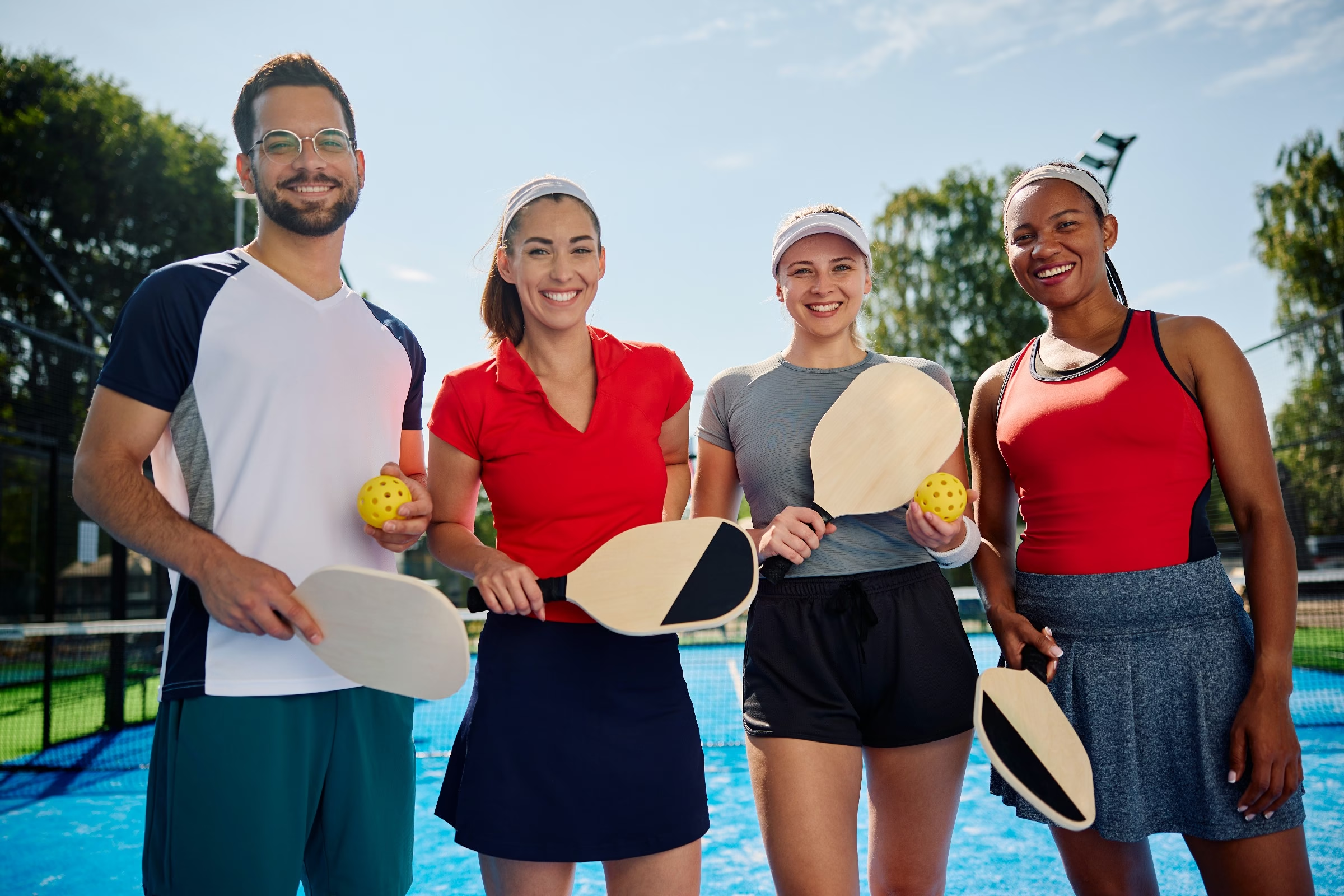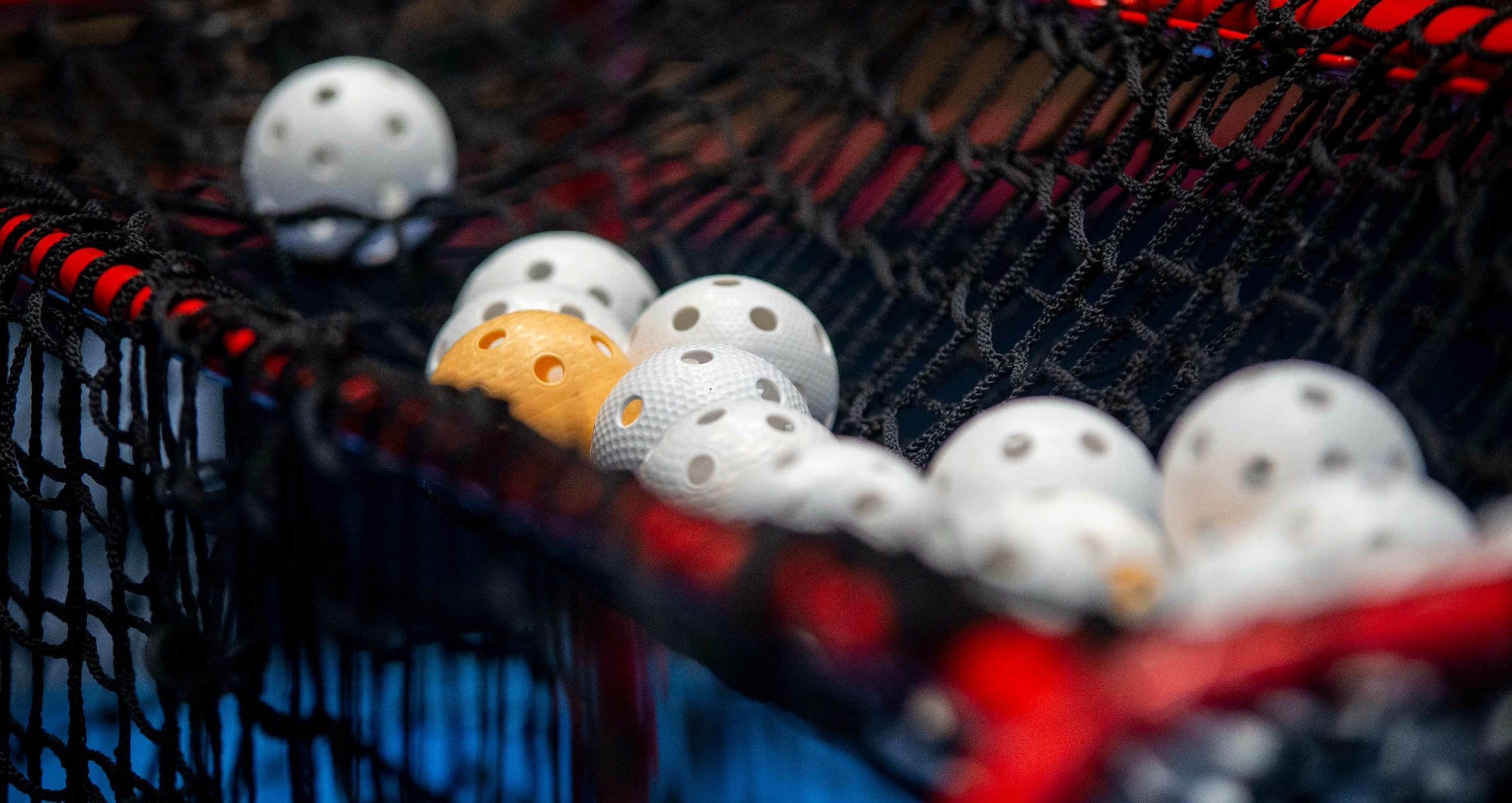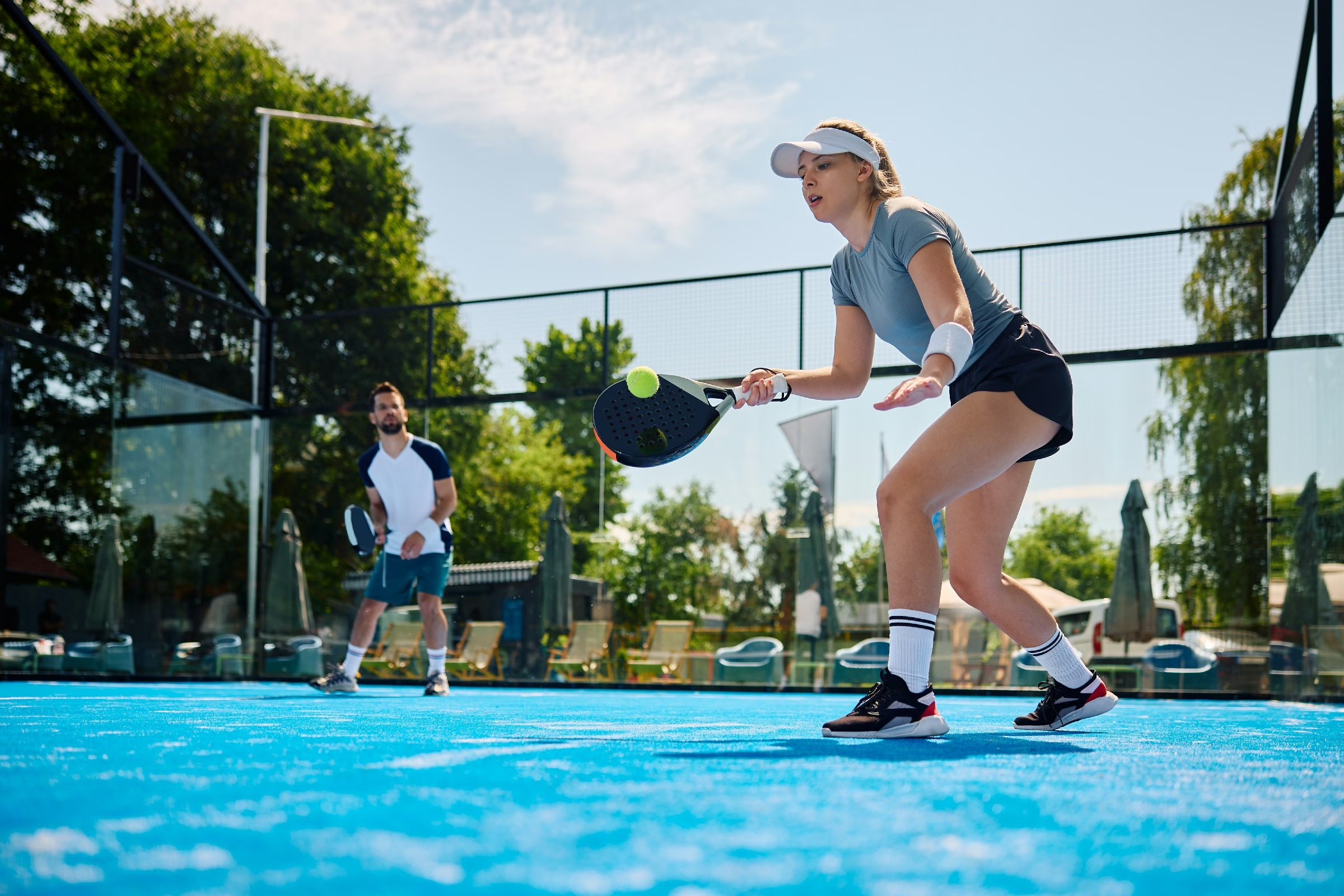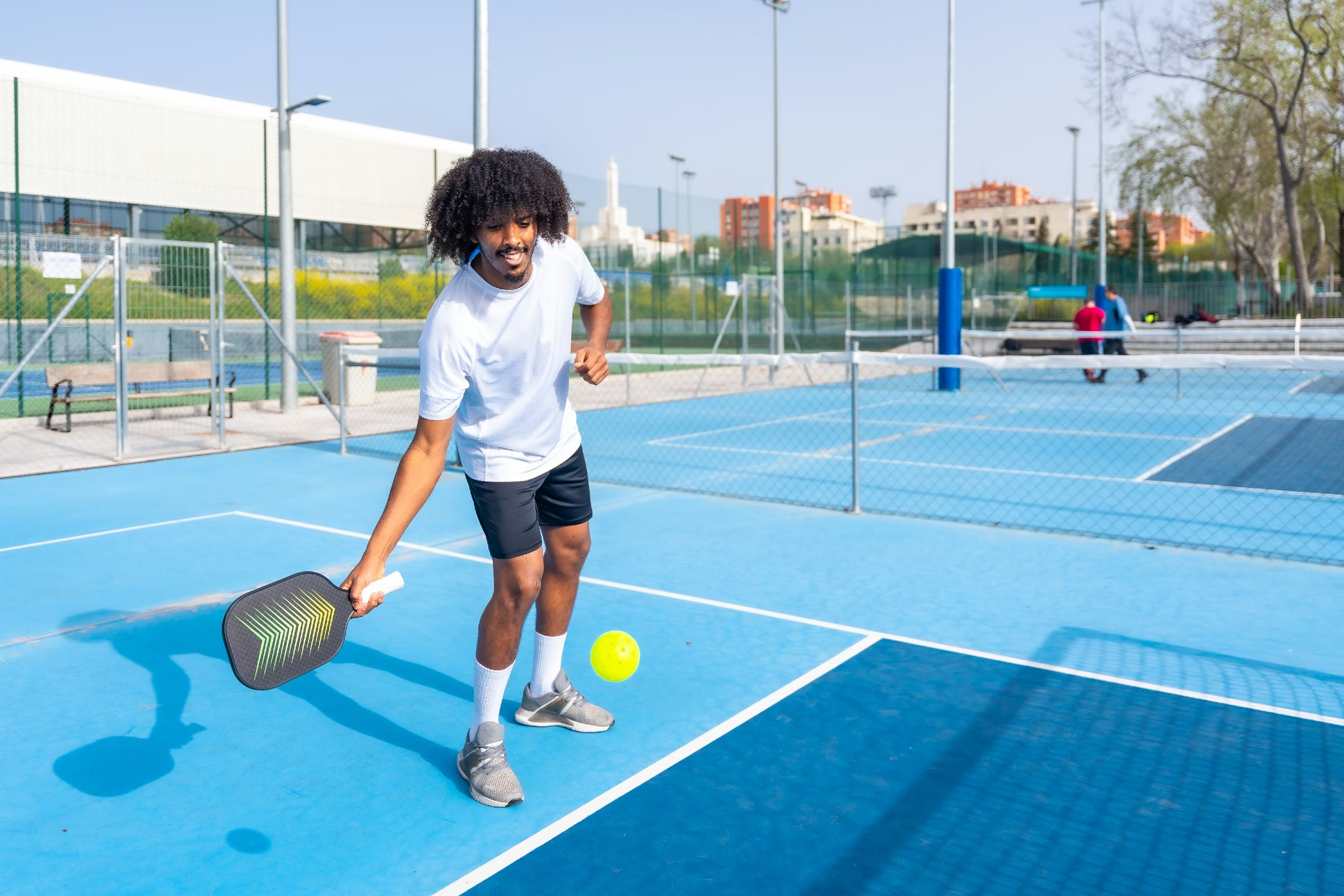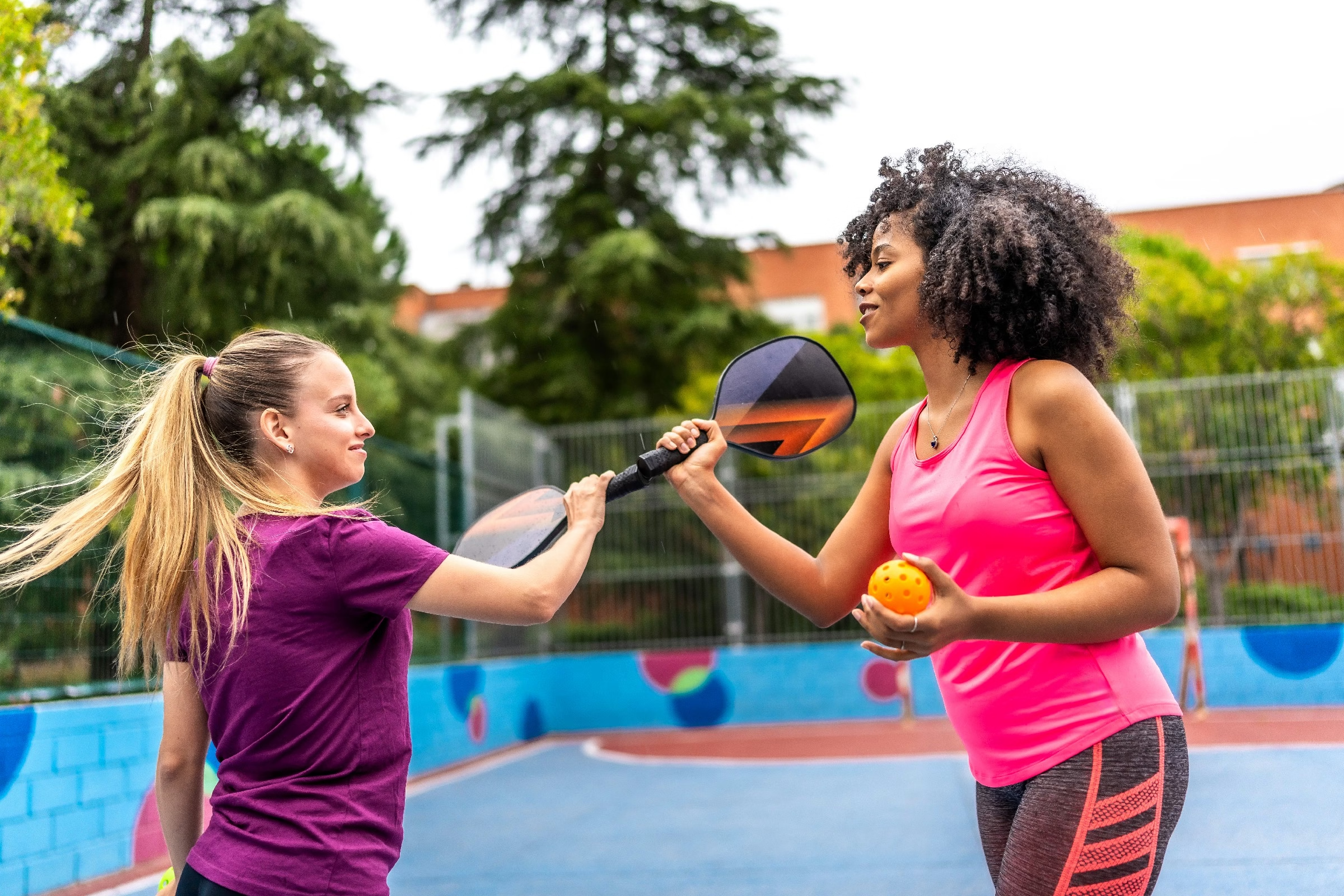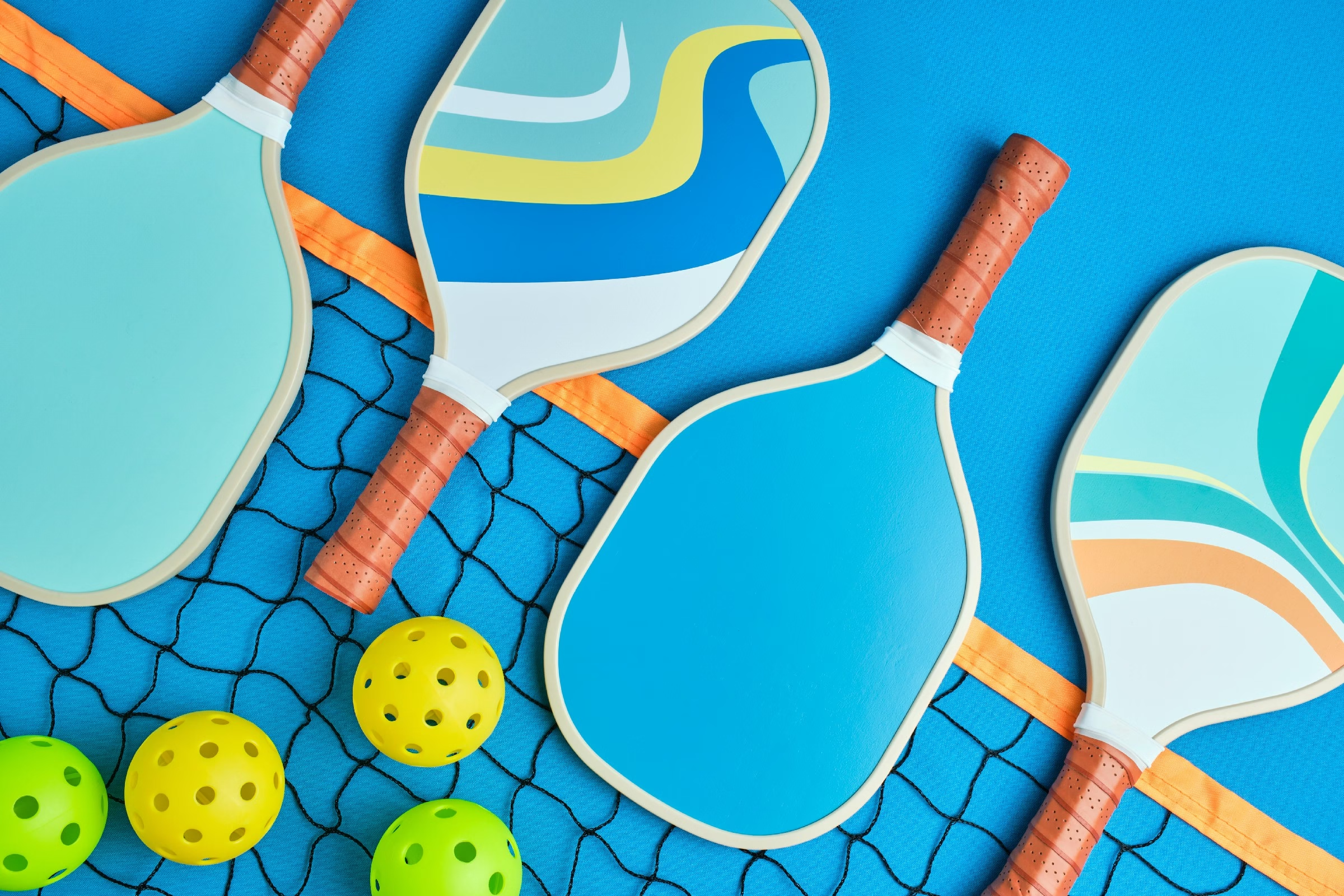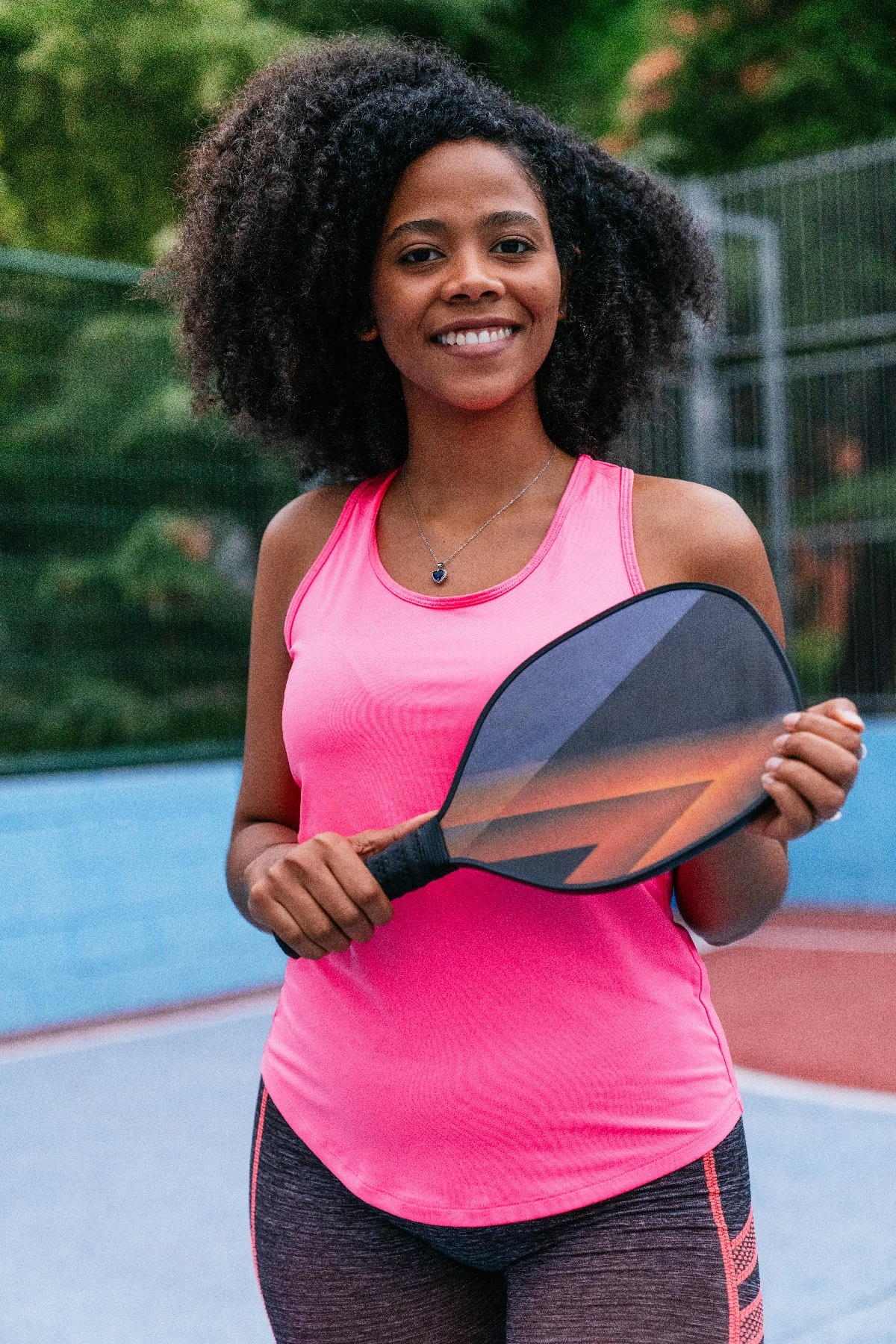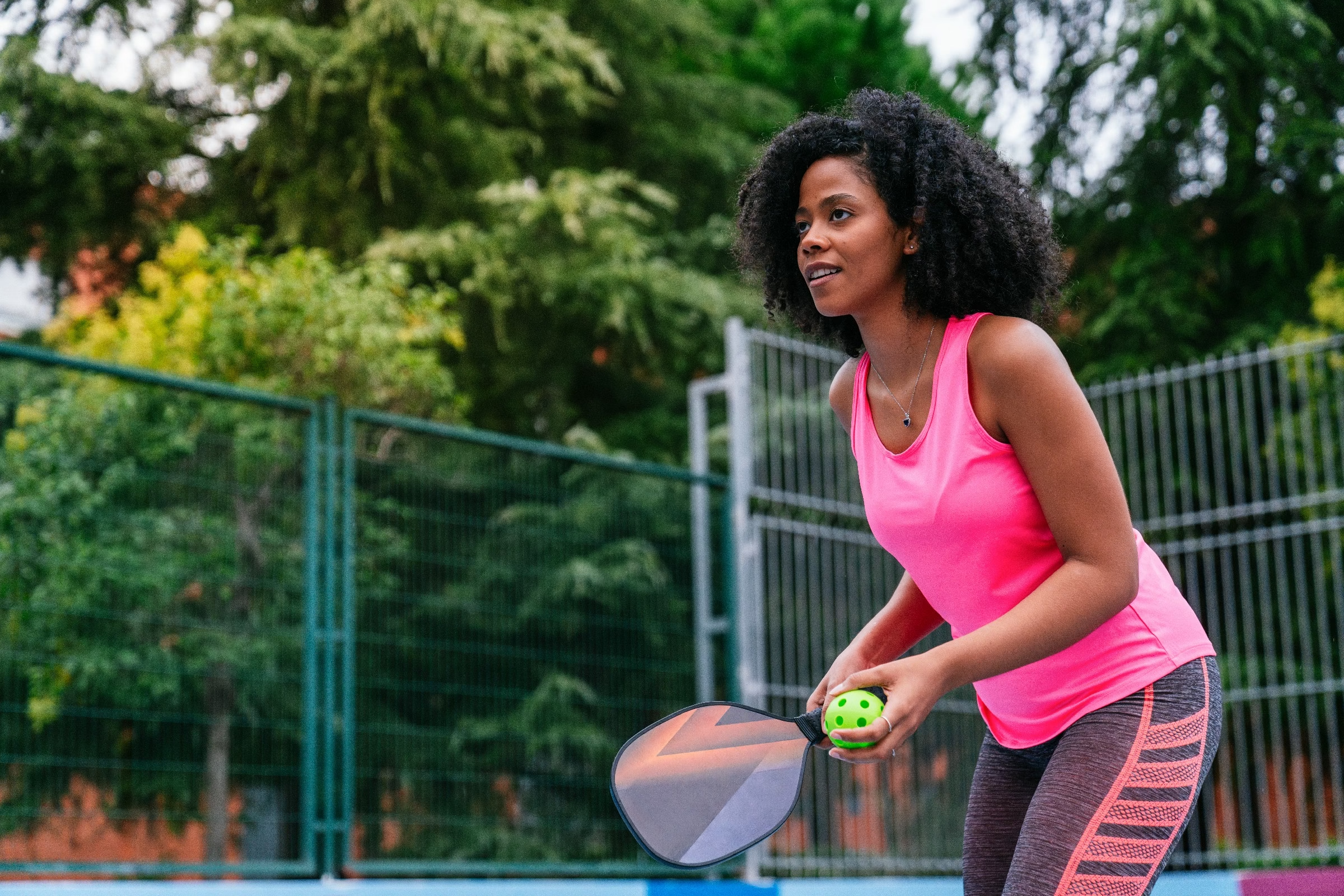Blog
what kind of paddle is best for pickleball

Title: “The Ultimate Guide to Choosing the Right Paddle for Pickleball”
Introduction:
In the vibrant world of pickleball, where skill meets strategy and fun melds with competition, one essential piece of equipment can make all the difference: the paddle. Whether you’re a seasoned pro smashing your way through tournaments or a casual player enjoying a pleasant match at the local park, the right paddle can enhance your playing experience. But with so many options on the market—varying in materials,shapes,sizes,and weights—choosing the best paddle can feel overwhelming. In this guide, we’ll explore the key factors to consider when selecting a paddle that suits your unique playing style and preferences. From the nuances of grip to the dynamics of power and control, we’ll equip you with the knowledge you need to make an informed decision. Let’s dive in and discover what kind of paddle is best for pickleball!
Table of Contents
- Understanding Paddle Material and Its Impact on Performance
- Choosing the Right Paddle Weight for Your Playing Style
- Exploring Paddle Shape and Its Influence on Maneuverability
- the Importance of Grip Size in Maximizing Comfort and Control
- Comparing Core Types for Optimal Power and Touch
- Recommended Paddles for Beginners, Intermediate, and Advanced Players
- Q&A
- Key Takeaways
Understanding Paddle Material and Its Impact on Performance
When selecting the right pickleball paddle,the material plays a critically important role in shaping your performance on the court. Most paddles are constructed from a combination of cores and face materials, each contributing to different qualities such as weight, durability, and power. The core often features options like polymer, nomex, or aluminum, which affect the paddle’s responsiveness and feel during play. Meanwhile, the face can be made from materials such as graphite, composite, or wood, influencing everything from the paddle’s pop to its control.
Here’s a breakdown of how these materials impact performance:
- Polymer cores: Known for their quiet performance and lightweight, these paddles typically offer a good balance between power and control, making them popular among recreational players.
- Nomex cores: with a reputation for being a bit louder and more rigid, these paddles tend to provide greater power and are favored by competitive players seeking a more dynamic playing style.
- Wood paddles: Generally the heaviest option, thay offer exceptional durability and are typically more affordable, making them ideal for beginners.
Along with core materials, the type of face also impacts your shot precision. Here’s a simple comparison:
| Face Material | Characteristics | Best For |
|---|---|---|
| Graphite | Lightweight, offers excellent touch and control | Intermediate to advanced players |
| Composite | versatile and offers a good mix of power and control | recreational and competitive players |
| Wood | Heavy and durable, with less control | Beginners or casual play |
Understanding these materials allows players to make informed choices that align with their style of play and skill levels.A thoughtful selection can enhance your performance, ensuring you make the most out of every game.
Choosing the Right Paddle Weight for Your Playing Style
When selecting a paddle weight, it’s essential to consider how it aligns with your playing style. Different weights can substantially affect your performance on the court. Generally, paddle weights fall into three main categories: light (below 7.5 ounces),medium (7.5 to 8.5 ounces), and heavy (more than 8.5 ounces). Each type offers distinct advantages and considerations:
- Light Paddles: These are perfect for players who prefer speedy reflexes and swift movements. Ideal for finesse shots and volleys, light paddles enhance maneuverability and allow for rapid swings.
- Medium Paddles: A balanced choice for most players, medium-weight paddles offer a blend of control and power. They are suitable for those who want versatility,making them great for all-around play.
- Heavy Paddles: These paddles provide more power and stability, which can be beneficial for aggressive players who rely on strength during their shots. Though, they may reduce maneuverability, requiring better timing and body positioning.
Understanding how each weight affects your game can guide you in making an informed choice. Such as, if you find yourself frequently at the net and enjoy playing an aggressive style, you may lean toward a heavier paddle for its power. On the other hand, if you often find yourself in long rallies where precision and reaction time are crucial, a lighter paddle could be more beneficial. To showcase the impact of paddle weight on gameplay, consider the following:
| Paddle Weight | Best For | Handling | Power |
|---|---|---|---|
| Light (< 7.5 oz) | Quick reflexes | Excellent | Lower |
| Medium (7.5 – 8.5 oz) | All-around play | Good | Moderate |
| Heavy (> 8.5 oz) | Aggressive gameplay | More challenging | Higher |
Ultimately, the key is to experiment with various paddle weights to see which one feels most cozy and effective for your specific style of play. remember, everyone has unique preferences and physical attributes, so taking the time to find a paddle that complements your game can significantly enhance your performance on the court. With the right paddle weight,you can enjoy a more personalized playing experience that helps you excel and savor every game of pickleball.
Exploring Paddle shape and Its Influence on Maneuverability
When selecting a pickleball paddle, the shape of the paddle plays a critical role in maneuverability. Paddles typically come in three distinct shapes: rectangular, oval, and teardrop. These shapes impact how easily a player can react to opponents’ shots, change direction quickly, and execute spins or angled shots. Rectangular paddles often offer a larger hitting surface, making them more forgiving for novice players.Meanwhile, oval paddles are slightly more elongated, allowing for increased reach and better control over the ball, which can benefit players seeking precision. Lastly, teardrop paddles, with their unique shape, provide a blend of power and control ideal for advanced players who thrive on tactical play.
The weight distribution of a paddle, influenced by its shape, also affects a player’s ability to maneuver effectively. A balanced paddle can facilitate quick wrist movements and reactive shots, while a top-heavy design may lend itself to more power but can hinder agility. Players should consider how they like to play: a lighter paddle may enable swifter reaction times, while a more robust design can aid in delivering those forceful smashes. It’s essential to find that sweet spot between power and agility to complement one’s playing style.
| Shape | Advantages | Best For |
|---|---|---|
| Rectangular | Wider hitting surface, more forgiving | Beginner players |
| Oval | Enhanced reach, allows for precision | Intermediate players requiring accuracy |
| Teardrop | Powerful hits and control | Advanced tactical players |
The Importance of Grip Size in Maximizing Comfort and Control
Choosing the right grip size for your paddle is paramount for achieving a balance of comfort and control during gameplay. A grip that is to large can lead to decreased wrist mobility, resulting in improper swings, while a grip that is too small may cause excessive squeezing, leading to fatigue and discomfort. Finding a sweet spot that feels natural in your hand allows for more fluid wrist movements, enhancing your overall performance on the court. consider trying different grip sizes during practice sessions to discover the one that feels most comfortable for you.
Additionally, the material of the grip plays a crucial role in your playing experience. Most paddles come with grips made from foam or rubber, each offering varying degrees of tackiness and cushioning. A tacky grip can provide better traction, preventing the paddle from slipping, especially when sweat comes into play. On the other hand, a softer grip can absorb shocks from impacts, making it easier to handle the paddle over extended periods.When selecting a grip, evaluate the conditions in which you typically play and how they affect your grip preference.
| Grip Size | Best For | Comfort Level |
|---|---|---|
| Small | Players with smaller hands | High |
| Medium | Average-sized hands | Moderate |
| Large | Players with larger hands | High |
Ultimately, understanding the meaning of grip size allows players to maximize both their comfort and control throughout matches. Regularly assessing your paddle and experimenting with different grips can significantly affect your game. As you test various options, pay attention to how each adjustment influences your ability to handle the paddle effectively, because the right fit could mean the difference between hitting an accurate shot and missing the target entirely.
Comparing Core Types for Optimal Power and Touch
When it comes to selecting the right paddle for your pickleball game, the choice of core material is crucial in determining both power and touch. The two predominant core types you’ll encounter are polymer and nomex. Polymer cores tend to offer a softer touch, which helps with increased control, making them a favorite among players who prioritize finesse and precision in their shots. Nomex cores,on the other hand,are known for their rigid structure,delivering more power and pop,ideal for those who like to dominate with aggressive playstyles.
Each core type comes with its own set of characteristics that can significantly impact your performance on the court:
- Polymer: Offers a quieter, more muted sound upon impact and absorbs shock well, reducing vibration in the hand.
- Nomex: Provides excellent ball response and a crisp feel, allowing for sharp angles and explosive shots.
Here’s a comparative look at the core types reflecting their attributes in a tabular format:
| Core Type | Power Level | Touch Control | Durability |
|---|---|---|---|
| Polymer | Medium | High | Medium |
| Nomex | High | Medium | High |
Choosing between polymer and nomex cores ultimately comes down to your playing style and what aspects of your game you wish to enhance. If you lean toward strategic play with precise placement, a polymer core might serve you better. conversely,if you’re vying for sheer power and speed in your shots,the nomex core could elevate your game. Considering these factors will help you make an informed decision and improve your overall performance in pickleball.
recommended Paddles for Beginners,Intermediate,and Advanced Players
Choosing the right paddle can dramatically enhance your game,especially when starting out. For beginners,it’s essential to find a paddle that offers a blend of lightness and control. The following paddles are highly recommended:
- rally Tyro 2 – Known for its large sweet spot and affordability, perfect for those just getting started.
- Selkirk Neo – A great entry-level paddle that strikes a balance between power and maneuverability.
- Paddletek Element - With a comfortable grip and lightweight design, this paddle helps beginners develop their techniques without the strain.
As players progress to intermediate skill levels, they often seek paddles that enhance precision and power. Here are some excellent options for the aspiring player:
- Engage Encore Pro – Offers excellent ball control and spin, enhancing strategic play.
- ONIX Z5 – Known for its rich performance and dynamic design, making it a favorite among those looking to up their game.
- Prince Response – With a larger paddle face, it allows for more effective hits and improved accuracy.
Advanced players typically prioritize performance features such as material composition and paddle shape for heightened control and power on the court. Below are top recommendations for those seeking competitive advantages:
- Selkirk Amped Invikta – Engineered for optimal power and spin with a 16mm thick core, perfect for aggressive players.
- ProLite Supernova – Combines durability with a top-tier grip and exceptional touch for finely tuned shots.
- HEAD Radical Pro – Provides a unique blend of weight and balance, catering to players who excel in all aspects of the game.
Q&A
Q&A: What Kind of Paddle is Best for Pickleball?
Q1: What are the main types of paddles available for pickleball?
A1: Pickleball paddles generally fall into three main categories: wood, composite, and graphite. Wood paddles are often the most affordable and durable, making them great for beginners. Composite paddles offer a balance of performance and durability, combining materials like fiberglass and polymer for a light yet sturdy option. Graphite paddles, while usually more expensive, are favored by advanced players for their lightweight and responsive touch, allowing for more finesse in gameplay.
Q2: How does paddle weight influence gameplay?
A2: Paddle weight typically ranges from about 6 to 9 ounces. Lighter paddles (around 6-7 ounces) allow for quicker reactions and more wrist flicks, making them suitable for speed-oriented players. Heavier paddles (8-9 ounces) can provide more power and stability during powerful shots, frequently enough preferred by those who play with more aggressive swings. It’s essential to choose a weight that feels comfortable for your own playing style.
Q3: What is the significance of paddle grip size?
A3: The grip size of a paddle directly affects control and comfort during game play. If the grip is too small,players may struggle with control,while a grip that’s too large can lead to discomfort or even injuries. Grip sizes typically range from 4 inches to 4 ¾ inches in circumference. To find your perfect grip size, try holding paddles of varying sizes and see which one allows for a secure but relaxed grip.
Q4: How does the paddle core material impact performance?
A4: The core material of the paddle plays a pivotal role in how the paddle performs. Common core materials include polymer, Nomex, and aluminum. Polymer cores are popular for their quietness and control, perfect for players who prioritize finesse. Nomex cores, on the other hand, offer a harder feel which can result in increased power. Aluminum cores provide a blend of characteristics, delivering a good balance between control and power. Each core material can subtly change the paddle’s feel, so trying different options can help you find your ideal match.
Q5: Should beginners invest in expensive paddles?
A5: Beginners typically benefit most from affordable options, as they allow for experimentation without a significant financial commitment. A basic wood or composite paddle can definitely help new players develop their skills before investing in pricier paddles. As your game evolves and you discover your style, you might consider upgrading to a higher-end paddle that aligns with your improved techniques.
Q6: can I customize my pickleball paddle?
A6: Absolutely! Many players enjoy personalizing their paddles through unique designs, colors, and even grip modifications. Some manufacturers offer bespoke options for shape, weight, and grip size, tailoring the paddle to individual preferences. Just be mindful that customizations can sometimes alter the original paddle performance, so proceed with research and care.
Q7: What should I prioritize when selecting a paddle?
A7: prioritizing comfort and feel is crucial. As your paddle is an extension of your arm during the game, it should fit comfortably in your hand and feel balanced while you play. it’s beneficial to test out different paddles – consider joining a local pickleball group or store that allows demos – to determine what suits your game the best. Ultimately, the best paddle is one that enhances your enjoyment and performance on the court!
Key Takeaways
selecting the ideal paddle for pickleball is a nuanced journey influenced by your playing style, skill level, and personal preferences. Whether you opt for the lightweight agility of a composite paddle or the robust power of wood, the essence of your game truly shines through in the right choice. As you refine your touch and strategize your next move on the court, remember that the most vital factor is how comfortable and confident you feel wielding your paddle. So, take your time exploring your options, perhaps even borrowing a few before you make your final decision. embrace the adventure,and may each game bring you joy,camaraderie,and,of course,a little friendly competition. Happy playing!

